The 50 Most Important People in Commercial Real Estate Finance
By Carl Gaines March 5, 2013 7:30 am
reprints
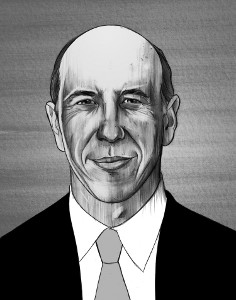
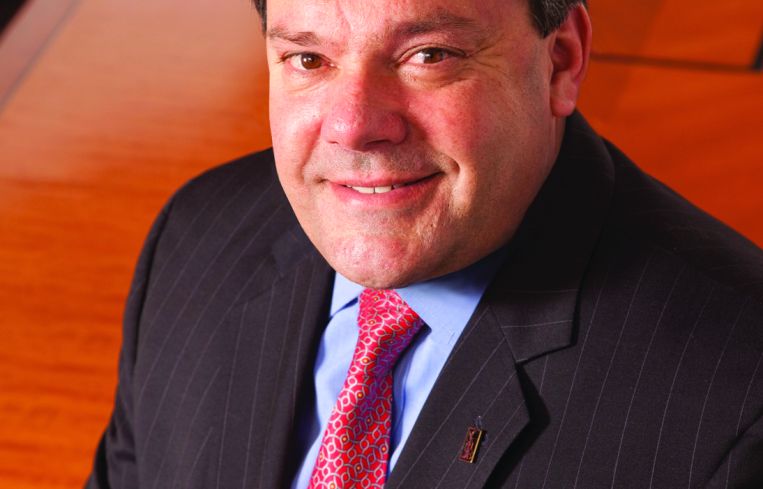




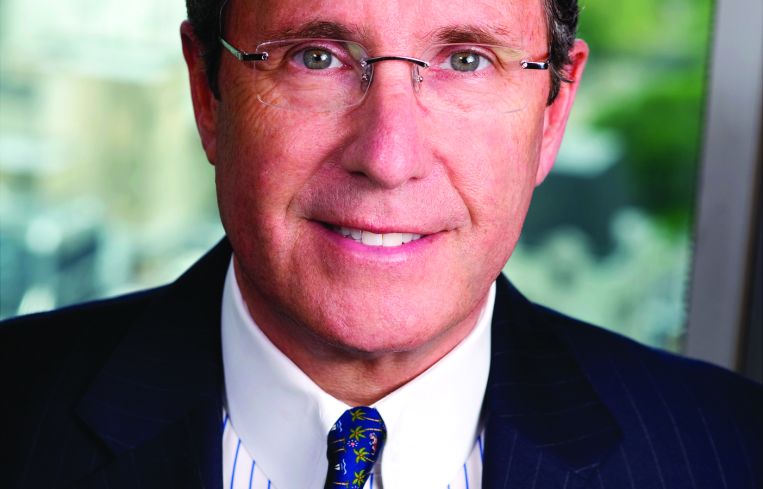
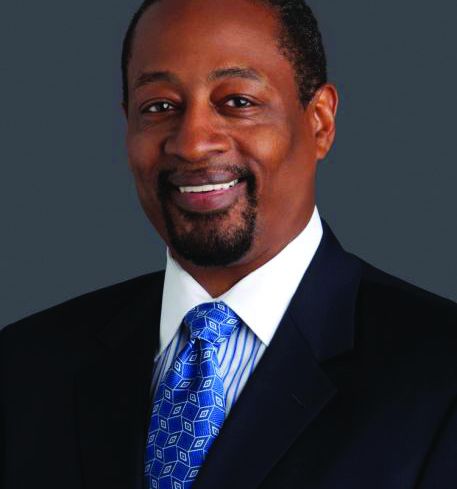
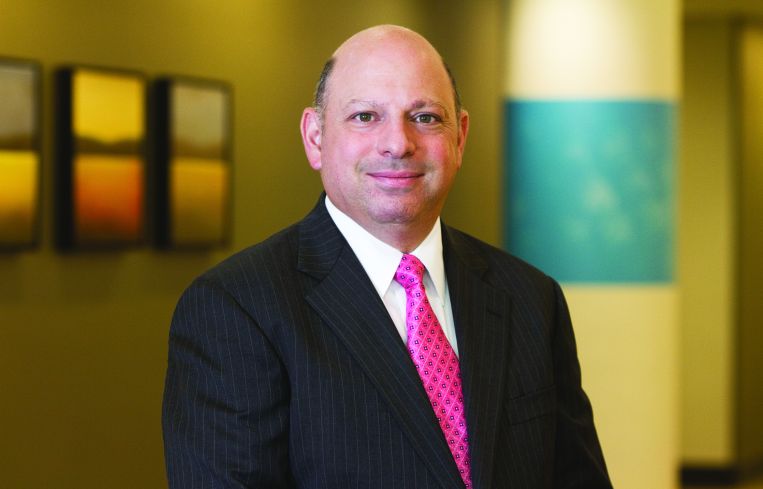
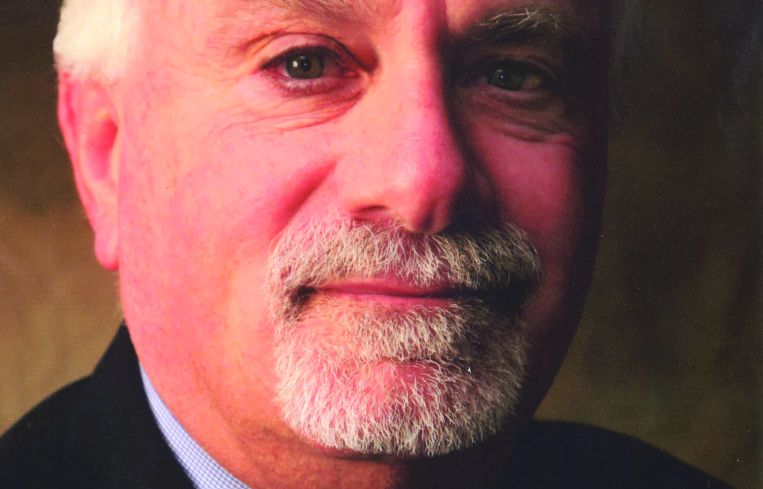








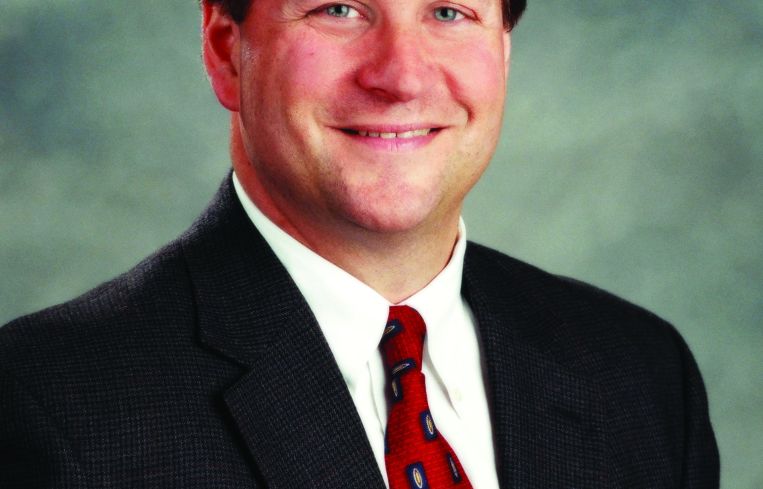


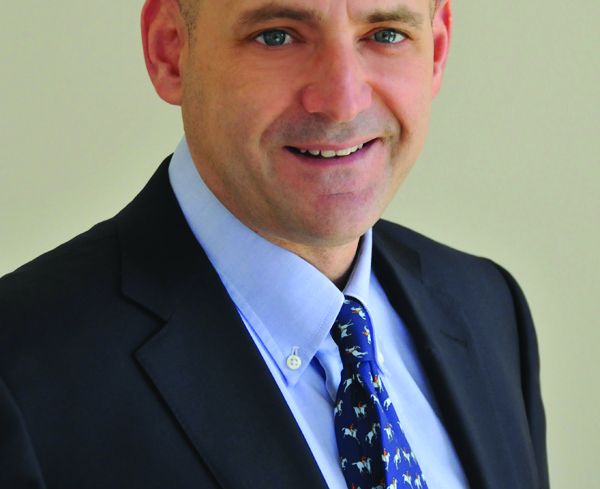

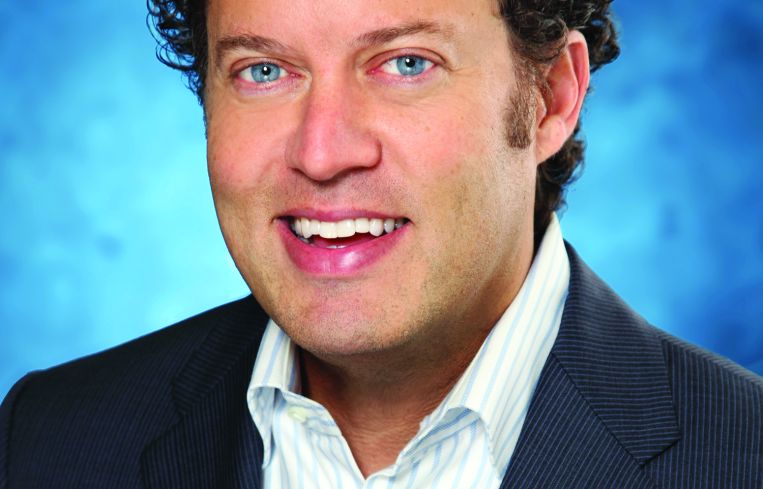



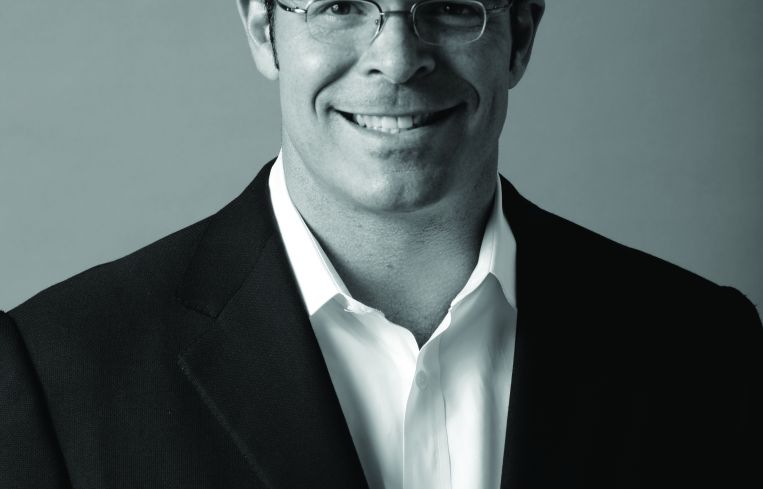

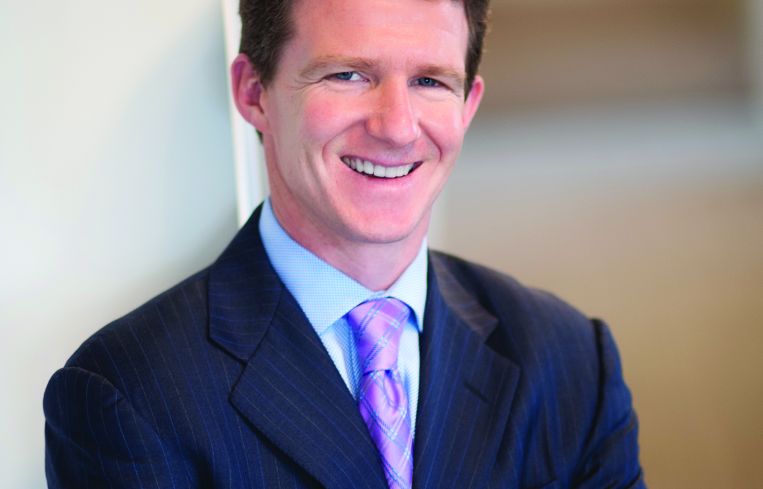

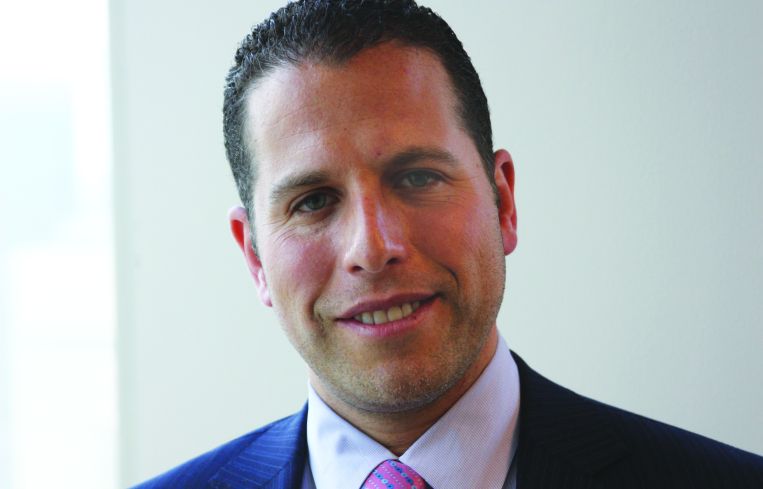
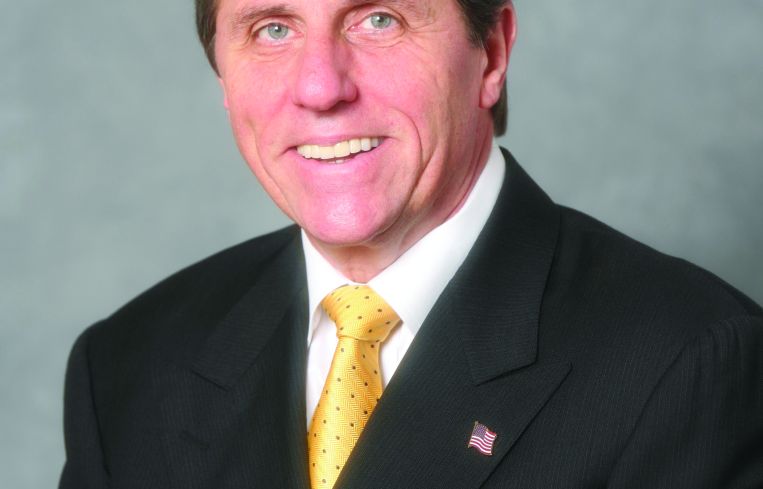
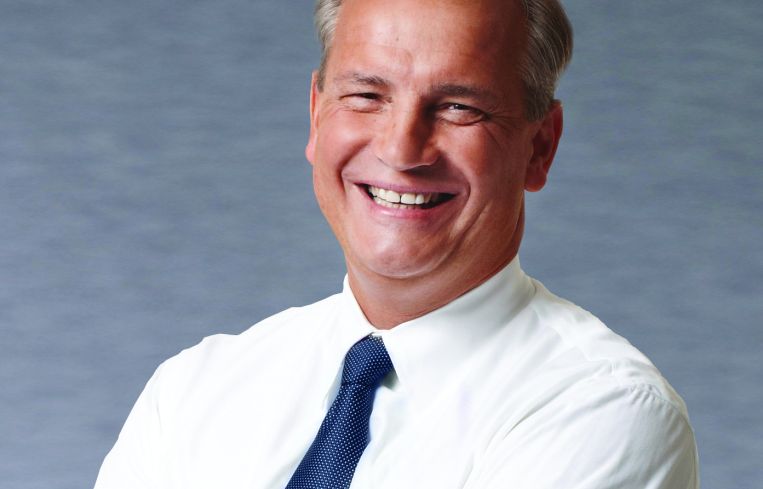
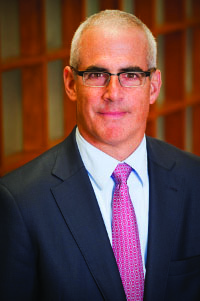

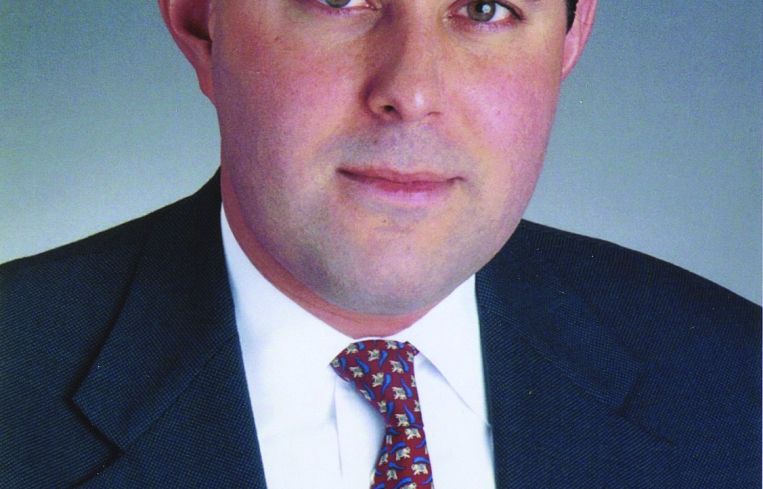
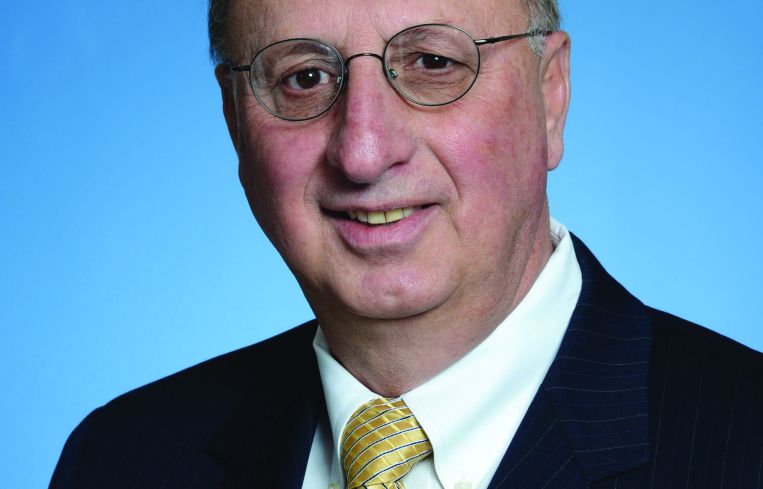


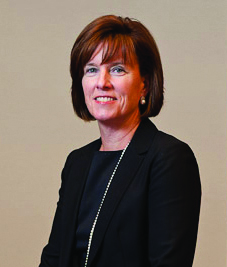






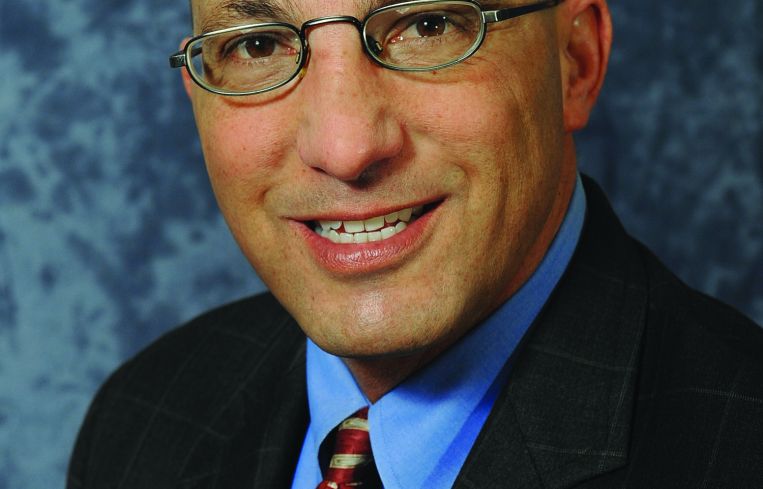
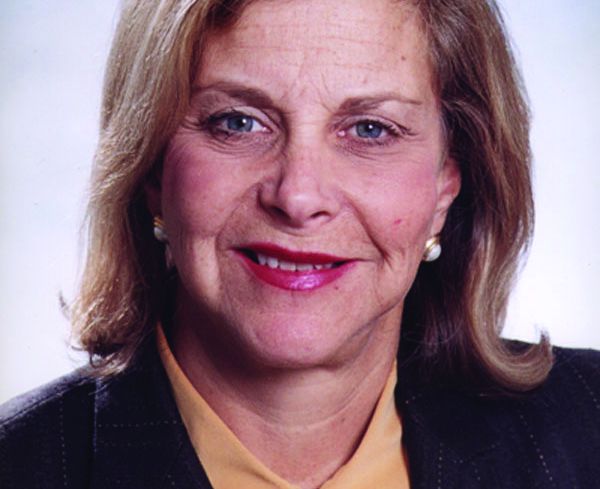
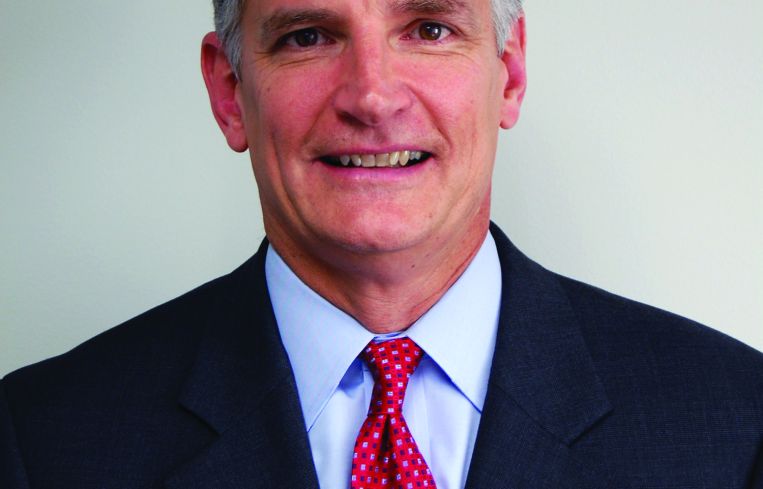
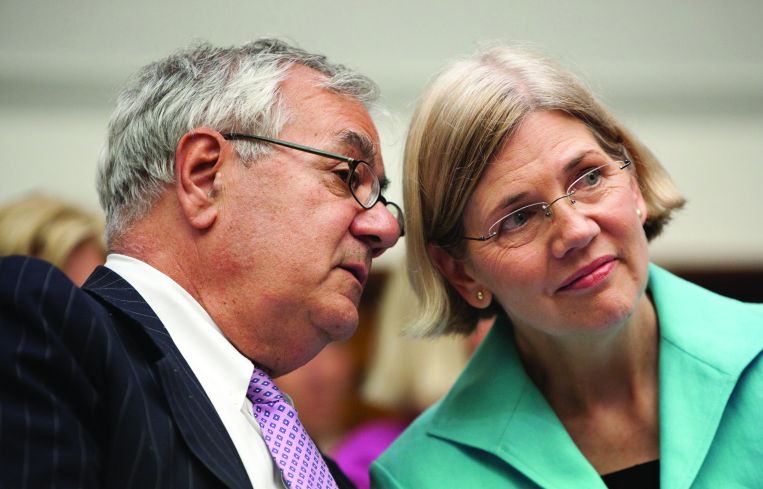
“God I hate these lists,” said one investment shop pro when asked to weigh in on what constituted “important” and who, exactly, might qualify for a list of the 50 Most Important People in Commercial Real Estate Finance.
In compiling the list—which is subjective and represents our view—we talked to many different people in the industry, consulted lists of top producers and paid close attention to our own monthly charts of banks that are most active. We kept our focus on the New York tristate region, though not everyone on the list has his or her base here.
Geography was only one of several logistical challenges. For instance, who’s more important—brokers or lenders? And with CMBS on the rebound and expected to hit somewhere around the $70 billion mark for 2013, how do conduits stack up?
“Brokers control the deals and the bankers control the money—and the money makes the deal happen,” one executive, himself a broker, told us. But then: “I feel like the brokers have the upper hand in the moment.”
For the most part, we came out on the side of the lenders who ultimately control the purse strings and pull the trigger to make a deal happen. The bulk of the names in the top 10 slots, in fact, are lenders—with only Ralph Herzka from Meridian Capital Group representing the brokers in this tier.
Among the groups absent are developers and attorneys, both of whom factor into our sister publication The Commercial Observer’s annual Power 100 list. But there is some overlap. Of the dozens of names on this, our inaugural list, many have a level of influence that, at least for now, places them on both lists.
Hopefully readers will agree with one top banker, who told us that lists like this one “are interesting and important” to the industry and that people like them in general. But of course, he’s on it.—Carl Gaines
Additional reporting by Alessia Pirolo and Damian Ghigliotty
Barry Sternlicht’s 2013 is off to a tremendous start. At the end of January, his Starwood Property Trust and Starwood Capital Group agreed to buy LNR Property for $1.05 billion, ensuring diversification of the business and expansion of the investment pipeline. In February, Starwood Property Trust was close to issuing a $450 million construction loan for phase one of the Related Companies’ Hudson Yards project, several sources revealed to The Mortgage Observer. Last fall, along with a fund controlled by Starwood Capital Group, the REIT completed a $475 million acquisition and construction financing for the redevelopment of the Times Square Gateway Center at 701 Seventh Avenue.
Starwood Property Trust, the country’s largest REIT, has officially entered the big leagues, establishing itself as one of the few companies able to provide the largest loans. As of December 2012, the company had about $482 million of investments expected to close in the fourth quarter of 2012.
The sun never set on Mr. Sternlicht’s empire. Last fall, Starwood Capital Group—which has $21 billion of assets under management—formed a European real estate finance platform to take advantage of the increasing need to refinance existing loans, as well as the ongoing demand for financing in Europe.
James Carpenter oversees a multifamily and commercial real estate portfolio at New York Community Bank totaling $31.7 billion. Last year, the bank closed $8.7 billion dollars worth of deals.
“Despite ever-increasing competition from existing lenders and new market entrants, NYCB maintained its strong presence in the New York City market as a leading portfolio originator of mortgages secured by rent-regulated multifamily buildings,” Mr. Carpenter told The Mortgage Observer.
In 2012, Mr. Carpenter and his team closed a $300 million refinancing deal for a 30-story office building on Park Avenue in Midtown Manhattan for a New York-based sponsor that is one of the largest owners and managers of commercial real estate in the United States, he said.
Shortly after closing the deal, NYCB brought in a major life insurance company as a 50 percent co-lender, said Mr. Carpenter. The bank has remained the administrative agent for the facility.
“NYCB has established itself as a preeminent commercial real estate lender in New York City,” he said. “We work hard to retain that reputation by closing high volumes of quality deals with certainty of execution.”
Mr. Lyon has presided over a steady period of growth at Capital One’s commercial real estate division, where conservative lending remains an emphasis. In the New York area, focus is placed on the bank’s $6 billion multifamily housing portfolio, primarily located in the outer boroughs. Lyon and his team closed a $12.2 million lending deal for the sale of 141 units on DeKalb Avenue in the Bronx. The group does not limit itself to those deals, however, and also handled the refinancing of the 702,815-square-foot building at 40 Worth Street in Tribeca in May 2012 with a $101 million first mortgage.
Over the course of its lifetime, Howard Lutnick’s two firms—Cantor Fitzgerald and the financial brokerage firm BGC Partners—have completed numerous real estate capital markets transaction. Another Cantor Fitzgerald affiliate, Cantor Commercial Real Estate, has originated over $5 billion incommercial real estate loans since its inception in 2010.
Collectively, the BGC and CCRE teams have originated and securitized over $150 billion in commercial loans across 5,000 properties and successfully raised approximately $30 billion in equity capital over 90 transactions.
Michael Lehrman oversees the real estate business at BGC, which acquired the commercial real estate advisory firm Newmark Grubb Knight Frank. Additionally, in his role with Cantor Fitzgerald’s commercial real estate business, CCRE, Mr. Lehrman, together with Anthony Orso, has presided over the first new CMBS platform in a decade to originate, securitize and lead manage its own deal—with an initial securitization of $635 million.
Mr. Orso has also played his part in keeping Cantor’s commercial real estate unit busy. In 2012, Cantor deals included the $26 million office financing at 251-259 West 36th Street and the $5 million financing of retail space at 2012-2018 Broadway. The firm was also busy in the multifamily space, particularly in the Bronx, where financings included a $9.8 million deal at1460 Macombs Road.
Correction: A previous version of this listing incorrectly identified BGC Partners as a subsidiary of Cantor Fitzgerald. The two are affiliates.
Andrew Mathias started SL Green’s lending business in New York close to 15 years ago, and in that time the lender has emerged as one of the leading providers of subordinate debt capital to the New York market. With the business now headed up by David Schonbraun, Mr. Mathias still stays involved, both on the origination side and structuring side. Historically providing everything from preferred equity to mezzanine debt, SL Green has been increasingly handling the origination of entire capital structures. For RFR’s acquisition of 285 Madison Avenue in September 2012, SL Green provided a bridge loan for the entire investment. Other borrowers have included Blackstone and RXR Realty.
Loans are a key component of SL Green’s business plan, offsetting lower-yielding equity transactions. Traditionally, the firm’s blend has been 90 percent real estate, 10 percent debt; currently SL Green holds $1.4 billion of loans on real estate against a total market capitalization of $16 billion.
“We think we are the go-to provider for subordinate capital in New York, without question,” Mr. Mathias said.
Ralph Herzka is founder, chairman and CEO of Meridian Capital Group—New York’s largest commercial mortgage brokerage firm. In 2012, Meridian closed approximately 3,300 deals for a total volume of $20 billion, up from approximately 2,800 deals for $17.3 billion the year previous.
“I would say that 70 percent of our business is in the New York metro area,” Mr. Herzka told The Mortgage Observer recently in a sit-down in his office. “In New York City, there is no one that does as many deals and dollar volume as we do.”
A Brooklyn native, Mr. Herzka founded Meridian in his home borough in 1991. Since then, the company has closed approximately $150 billion in financings, moved its headquarters to lower Manhattan, and opened offices in New Jersey, Maryland, Florida, Arizona, California and Illinois. Mr. Herzka is also co-founder of the mortgage banking firm Beech Street Capital, as well as co-founder and member of the board of the commercial real estate lender and CMBS originator Ladder Capital. In 2012, Beech Street placed third on Fannie Mae’s annual list of top multifamily loan originators and was the top seller in the Northeast.
“We [at Meridian] started off the year very strongly,” he said of 2013 so far. “In the first seven weeks of the year we’ve already closed $4 billion, and we’re on track to exceed last year. Interest rates are always a sensitive part of what we do, the acquisition market remains very strong, and we feel that 2013 will be a better year than 2012.”
Strong relationships with lenders and a constant focus on clients are among the keys to Meridian’s success, Mr. Herzka said. “We are always focusing on what is the best strategy for the client.”
“He has a very unique and close relation with his client base,” Michael Maturo, president and chief financial officer of RXR Realty, said of Mr. Herzka. Meridian arranged a $500 million loan for RXR’s acquisition of the Starrett-Lehigh Building in 2011. “He understands the need of the lenders extremely well and is able to explain the strategy in terms of the lending process. I find working with Ralph to be a very smooth and efficient process.”
Last year, Meridian arranged $127 million in financing on behalf of Harbor Group International for an office building at 200 Public Square in Cleveland, Ohio, and negotiated a $49.9 million loan for the Harrison Station luxury multifamily building in Harrison, N.J., on behalf of Ironstate Holdings and the Pegasus Group. Vornado Realty Trust, Steiner Studios, Cayuga Capital Management and Platinum Equity are also clients.
In 2012, 30 percent of Meridian’s transactions by dollar volume were for new clients, and the firm maintained a client retention rate of over 90 percent. The firm’s staff is growing, too. Last year, Meridian set up a loan syndication group headed by Terry Baydala and launched an equity capital market group headed by Peter Steier. In fact, since January 2012, Meridian has hired 65 new people, bringing the total number of employees to just over 210 across the country.
Speaking of growth, in March Meridian will start a training program for its new hires. For seven weeks, a team of 10 people will learn everything about the firm and the commercial real estate finance market.
Last year was big for Andrew Farkas’s C-III Capital Partners. In January, the firm completed its acquisition of NAI Global, which gave it access to an additional 5,000 real estate professionals. Multifaceted, to say the least, C-III Capital manages roughly $2 billion of invested capital via four debt funds, according to its website. Then there’s the servicing capabilities, which placed it toward the top of several of the lists from the Mortgage Bankers Association’s year-end survey of commercial and multifamily servicing volumes for 2012.
Since January 2012, Jeffery Hayward has been the head of multifamily at Fannie Mae. By any measure, he said, “2012 was a terribly successful year” for the company, which remained the largest source of multifamily financing. Last year was the third-highest acquisition year in Fannie Mae’s history, with $33.8 billion in financing provided to the multifamily market. Approximately 98 percent of Fannie Mae’s loans were delivered through mortgage-backed securities execution.
After 25 years with Fannie Mae, Mr. Hayward, said that “most people who work at Fannie Mae really feel a sense of mission.” Succeeding Kenneth Bacon as a head of the multifamily business “was a spectacular leadership opportunity, and I felt honored to have the opportunity to serve” the company, he said.
In 2013, he said, he will continue “to serve the multifamily market and to enhance our performances for the benefit of taxpayers.”
In 2012, Freddie Mac had a record $28.8 billion in volume for its multifamily business, which David Brickman has headed since June 2011.
“It was a record year on multiple fronts, for the mortgage purchase activity, for securitizations and for earnings,” said Mr. Brickman. “In 2012, we really got into a place were the company is healthy and is growing.” The multifamily volume increased by 42 percent from $20.3 billion 2011. Freddie Mac has been focusing on its securitization program, which in 2012 involved 88 percent of the total volume of new loans. “We anticipate an increase in securitization this year, with 10-year mortgage loans being the predominant loan type as borrowers lock in the low interest rates.”
The stability of management, which under his guidance has not been affected by major changes, has been another point of pride for Mr. Brickman.
Alan Wiener and his team at Wells Fargo lent $9.5 billion for real estate projects throughout the U.S. last year, including the largest loan that HUD has ever done—a $621.5 million refinancing deal to renovate Co-op City in the Bronx.
Within the New York area, the bank lent about $2.5 billion for multifamily real estate projects in 2012, he said. “Our business is extremely active,” Mr. Wiener told The Mortgage Observer. “In the New York market, we’ve become a one-stop shop for all kinds of real estate finance.”
In mid-February this year, Wells Fargo closed a $165 million deal for one of two new subsidized affordable income properties on the Queens waterfront.
“We led the larger of the two buildings, and we bought the tax-credit equity on both buildings, which was about $30 million,” said Mr. Wiener. Citibank handled the $80 million loan for the smaller of the two buildings, he said.
Wells Fargo ranked first out of 105 companies on the Mortgage Bankers Association’s year-end survey for 2012, with $429.1 million in total primary and master servicing mortgage loans. The bank’s average loan size in that category was $12.2 million.
“Wells Fargo, probably by two or three times any other bank, is the largest estate lender nationwide,” said Mr. Wiener.
Not that you wouldn’t have noticed, but Asian banks are in and European banks are out when it comes to supplying the lion’s share of New York’s high-profile commercial mortgages. And Bank of China is at the forefront of this shift.
“We don’t like to be published,” Mr. Qiao said. “We’re not allowed.” He did concede, however, that in New York last year, the bank had issued $2 to $3 billion in commercial mortgages—loans such as the $775 million first mortgage, now replaced, for SL Green’s 1515 Broadway and $600 million for real estate investor Joe Chetrit’s acquisition of the Sony Building at 550 Madison Avenue.
Jonathan Pollack help set a new precedent for CMBS lending in 2012, while maintaining steady growth in Deutsche Bank’s overall CRE lending, valued at $17 billion for the year.
"We had some pretty nice landmark single-asset deals, both on the securitization side and the balance-sheet side,” Mr. Pollack told The Mortgage Observer. “The first one of the year happened to be in New York, and that really got the ball rolling."
That deal was for $625 million in commercial-mortgage bonds for developer Sheldon Solow’s 50-story tower at 9 West 57th Street. The deal closed in February 2012 and was rated AAA.
"We demonstrated that CMBS could give pricing on institutional assets which was competitive or inside of insurance company pricing,” said Mr. Pollack. “So it really opened the market for CMBS lenders to compete for the top-notch buildings. That success has a cyclical nature to it. Each successful CMBS deal opens doors for us to do more”
For the second year in a row, Deutsche Bank was ranked the top CMBS issuer in 2012 for both the U.S. and global markets, according to Commercial Mortgage Alert's year-end summary. The bank issued $9 billion in the U.S. and $10.5 billion globally last year.
In its first year, CIT Real Estate Finance, under Matt Galligan’s guidance, closed deals for a total volume of $1.1 billion. In November 2011, Mr. Galligan was appointed to launch CIT Group Inc.’s new real estate division after serving as head of U.S. property finance for Bank of Ireland, which had to liquidate its U.S. portfolio due to the ongoing euro zone crisis.
In 2012, Mr. Galligan was able to bring the newly created division—and his fifth startup—to profitability. “It was a fantastic year,” Mr. Galligan said. “We hit the market perfectly.”
In March 2012, CIT Real Estate Finance closed on a $50 million commitment in a $700 million syndicated construction loan for Extell Development’s One57. Most recently, CIT Real Estate Finance was the lead arranger of a $35.7 million financing for Garrison Investment Group on 12 shopping centers in the Midwest. The move is in line with Mr. Galligan’s goal for 2013: the company plans to further emphasize its national orientation, he said.
Robert Verrone founded Iron Hound after leaving Wachovia in 2008, and since its founding, the firm has closed $9 billion in deals between its restructuring and brokerage businesses. Iron Hound has completed another $2 billion in recapitalizations, as well as a further $1.5 billion in debt deals. The brokerage business continues to grow, with a number of deals currently in the pipeline. Some of Mr. Verrone’s past deals have included 14 Wall Street, 666 Fifth Avenue and 3 Columbus Circle.
Led by this trio, Ladder Capital has originated $2.6 billion in commercial real estate first mortgage loans over nine securitizations since the firm’s inception. Ladder closed two securitizations in 2010, three in 2011 and four in 2012. In June of 2012, Ladder announced a $1.1 billion securitization of commercial real estate first mortgage loans. In the third quarter of 2012, Ladder participated in two CMBS transactions with a total contribution of $645 million in first mortgage loans. Past loans have included $230 million originated for the Durst Organization’s 1133 Avenue of the Americas, $45 million to Lighthouse International’s 111 East 59th Street and $75 million for the Related Companies’ 1 Union Square South.
Gino Martocci and Peter D’Arcy oversee a $7 billion portfolio of loans in the tristate area for M&T Bank. That portfolio includes $2 billion in originated loans. In late 2012, their team closed a $315 million deal in New York City for the retail and condominium conversion of the Helmsley Carlton House for Extell Development Company and Angelo, Gordon & Co., and a $153 million deal for Friedland Properties’ 19,100-square-foot retail property, both on Madison Avenue.
The M&T bankers, who were both recently promoted to oversee expanded territories, also recently closed a $39 million deal in Princeton, N.J., for the senior multifamily apartment complex Copperwood.
Mr. Martocci, Mr. D’Arcy and company have big plans for more commercial real estate financing in the Garden State in 2013 as they get ready to add over 95 branches to their network through the pending acquisition of Hudson City Bank Corporation.
“We are a relationship-focused bank,” said Mr. Martocci. “So to the extent that our clients are doing it, we’ll do it.”
M&T Realty Capital Corporation was ranked 24 out of 105 companies on the Mortgage Bankers Association’s year-end survey for 2012, with $11.1 million in total primary and master servicing mortgage loans. M&T’s average loan size in that category was $10.4 million.
Real estate capital intermediary HFF ranked highly in the Mortgage Bankers Association’s 2012 year-end list of commercial/multifamily mortgage servicers. The firm ranked 11th in total loan volumes in 2012, with $31.3 billion in arranged loans and an average loan of $13.7 million. The firm ranked seventh in CMBS loans, with $11.5 billion in total volume and an average loan of $16.2 million. HFF further appeared in the top 10 for commercial bank loans and life insurance company loans. Mr. Pelusi, an executive managing director based in Pittsburgh, has worked with a number of high-profile clients, including Bank of America, Blackstone Real Estate Advisors, JPMorgan Investment Management, Macquarie and TIAA-CREF. Two of his largest deals have been with Equity Office Portfolio Trust in Chicago and Austin, with values of $2.78 billion and $1.15 billion, respectively. Mr. Tepedino is a senior managing director based in New York and working with clients such as Beacon Capital Partners, Ivestcorp International and Sterling American Property. One of his largest arranged loans was a $775 million adjustable-rate loan for 1515 Broadway.
“It wasn’t the mail room,” said Robert Merck, senior managing director and head of real estate investments at MetLife, of his first job at the company. “You could probably say that I was an analyst in our real estate equity asset management group.”
It’s easy to understand why he can’t remember with any degree of clarity—this was, after all, 1982. Mr. Merck, who grew up in Macon, Ga., was finishing up his MBA at Georgia State University at night when he joined the Atlanta real estate office of MetLife.
Now, as senior managing director and head of real estate investments at the company, he oversees a portfolio of commercial real estate mortgages valued at about $43 billion.
In addition to the commercial mortgage facet of the business, Mr. Merck also manages the equity real estate portfolio, agricultural lending—this came under his purview in 2004, along with a new third-party asset management division.
On the debt side, reached by phone recently, Mr. Merck said that MetLife would like to continue to grow the $43 billion portfolio “as the assets of the company grow.” He told The Mortgage Observer that commercial mortgages had been very good investments, “delivering strong relative value over fixed-income alternatives”—a strength that remained even during the downturn.
Noteworthy 2012 commercial mortgage transactions include $253 million for 101 California Street in San Francisco—a Class A office tower that the government of Singapore bought late in the year from Hines for a reported $910 million; $362 million for Manhattan’s Waterside Plaza, a 1,471-unit residential complex on the East River; $258 million for the Westin Times Square Hotel; and $130 million for 551 Fifth Avenue.
“One of our competitive edges or strengths is our ability to write large loans on our own,” Mr. Merck said when asked about these recent deals. “We can write single-asset deals—we’re comfortable going up to, say, $400 million, and that sets us apart from a lot of the competition. We also have a regional office network of eight U.S. regional offices around the country—they’re geographically dispersed in major markets—and that allows us to better source deals on the ground as well as better manage assets in our portfolios.”
About 80 percent of the company’s business is with repeat customers, a category that the hotel deal falls under, though Mr. Merck pointed out that the company will lend on high-quality hotels in major markets. The borrower for the 45-story, 863-room Westin, which opened in October 2002, is Tishman Hotels—also the developer.
“We have a long-standing relationship with Tishman Hotels that really dates back to the 1980s, when we developed the Dolphin and Swan Hotels at Disney World with them.”
The process of building long-term relationships is something that Mr. Merck said he enjoys about his job, though, so he was quick to add that MetLife is always looking to establish new relationships and further expand that reserve of repeat customers.
When asked what else he likes about the career he’s spent 30 years building, much of it managing a sizable debt portfolio, he referenced both the ability to put a deal together and the kick-the-bricks nature of his work.
Later this month, David Durning will succeed David Twardock as president of Prudential Mortgage Capital Company. “These will be big shoes to fill, but David has been a terrific role model and manager, and I feel comfortable with his inheritance,” Mr. Durning said. Mr. Durning has been with Prudential since 1988, and for the last 15 years has worked closely with Mr. Twardock, most recently as a senior managing director and head of origination. The partnership will ensure an “easy and smooth transition,” Mr. Durning said.
Prudential Mortgage Capital Company provided $12.2 billion in financing in 2012, which was the second-highest year ever for the company. “We are targeting $13 billion for 2013,” Mr. Durning said. Key components of this growth strategy will be the expansion of international financing, especially in Europe, increased lending from the Agency Gateway Program for multifamily properties, health care lending and CMBS lending volume.
The $200 million refinancing of the Newport Port Tower office building in Jersey City, N.J., is among the largest deals closed by Prudential in 2012 in the tristate area.
Steve Kenny and his team closed more than $10 billion in commercial real estate transactions for New York and New Jersey in 2012, the Bank of America real estate executive said. But he noted that the bank’s CRE lenders are not rewarded on “purely growing the outstandings of the book” and focus equally on establishing diversified, full-service relationships with clients.
In the second half of the year, Mr. Kenny oversaw an office refinancing deal in Midtown Manhattan for over $300 million for a client with an existing loan that was maturing. That client was looking for certainty of speed and execution, he said.
Bank of America Merrill Lynch ranked fourth out of 105 companies on the Mortgage Bankers Association’s year-end survey for 2012, with $112.5 million in total primary and master servicing mortgage loans. The bank’s average loan size in that category was $12 million.
“Last year we improved our portfolio in the broad New York and New Jersey real estate community by more than 30 percent from 2011,” Mr. Kenny told The Mortgage Observer. “We did that by continuing to win the trust and respect of our clients, and that includes adding several new clients.”
To accommodate that growth, Mr. Kenny said, he expanded his staff last year by adding “diverse but complementary talent.”
Mr. Tiesi joined ABN Amro as head of European Real Estate in 2004 and then joined RBS in 2007. Two years later, he came stateside to re-establish RBS’s commercial real estate business here. It would difficult to talk about the current re-emergence of the conduit market without mentioning him. That’s because in 2010, he conceived and executed the first post-financial-crisis multi-borrower CMBS transaction—RBSSI 2010-MB1—a $300 million deal that gave the market a much-needed shot in the arm. Now, roughly two years later, the bank’s 2012 securitization volume hit $3 billion, with a projection of $4 billion for 2013.
Jefferies LoanCore—a joint venture between Jefferies Group, the Government of Singapore Investment Corporation and LoanCore Capital, where Mr. Finerman was a managing director—launched in 2011. At the time, Mr. Finerman, the newly minted Jefferies LoanCore CEO, said that it would “respond to the capital needs of commercial real estate owners and investors across the United States.” Now, several years later, the initial $600 million equity commitment has yielded positive returns for investors.
“That’s been doing very well,” Mr. Finerman told The Mortgage Observer. “It’s about two years into it, and it’s been doing great. The returns have been great.” Mr. Finerman, who runs the debt side of the funds, said that it has financed multiple asset types and also purchased a diverse array of debt.
In addition to his responsibilities as CEO of Jefferies LoanCore, Mr. Finerman is also a partner in the Divcore private equity firm—which includes the LoanCore debt funds and the Divco West Equity Fund.
Last year, Jason Pendergist oversaw a portfolio of 3,000 loans for the New York metropolitan region valued at $8 billion, part of Chase’s $43 billion portfolio in 15 markets around the country.
As business picked up over the past 18 months, Mr. Pendergist said, he grew his staff to 100 employees from just under 40.
“Coming through the financial storm of 2008 and 2009, as we had worked through those challenges it became a simply a matter of getting back to business as usual,” he told The Mortgage Observer. “My role was to bring the expertise, culture and success stories we experienced out West to the Northeast market.”
Among multiple transactions last year, Mr. Pendergist and his team closed three deals in New York in the fourth quarter: a $38 million package of 13 loans for a work force housing property in the Bronx, a $25 million package of 18 loans for a multifamily/retail property in the Upper West Side and an $18 million cash-out refinance deal for a multifamily property in Westchester.
“We’re one of the nation’s largest lenders in the apartment lending space,” he said. “We’ve been in this business nationally for better than 40 years.”
Correction: A previous version of this listing misstated the number of loans Mr. Pendergist oversaw in 2012, as well as their value and the overall value of JPMorgan Chase's U.S. portfolio.
Pennsylvania native Simon Ziff has certainly made his mark in New York over the course of his nearly 25-year career: the six Ingenious Deal of the Year awards Mr. Ziff has received from REBNY are indicative of his success. Among Ackman-Ziff’s completed transactions in 2012 were a $46.25 million refinancing and a $5.9 million acquisition loan of a 149-unit portfolio in New York spread across both residential and retail components. The group also closed a portfolio of loans totaling $65 million over 17 properties, including 268 multifamily units. Additionally, Ackman-Ziff arranged close to $1 billion in construction loans over 12 deals in 2012.
As head of TDBank’s commercial real estate unit, Gregg Gerken has presided over a business which has booked upward of $2.5 billion worth of business per year for the past three years. The firm operates predominantly in the major East Coast markets and is building out its New York operation, where Roy Chin has joined on as regional director of commercial real estate.
In New York, cautious optimism has been replaced by full optimism, Mr. Gerken said. “It’s not just significant development but projects of both size and scale, which dwarf other metropolitan areas,” he told The Mortgage Observer. With the large amount of equity being used in the New York market, Mr. Gerken is optimistic for TDBank’s business, as markets on the East Coast, most significantly New York, continue to rebound.
Messrs. Cobb and Kennedy—number 36 on sister publication The Commercial Observer’s Real Estate Power 100 list for 2012—will soon join several other members of Barry Sternlicht’s empire. “The entire LNR team is extremely excited to be joining the Starwood family,” the pair said in January 2013 when Starwood Property Trust and Starwood Capital Group announced that they had agreed to buy LNR for $1.05 billion in cash. Both will stay on at LNR, the largest special servicer, with $130 billion in loans under management.
It’s been a long road for the Miami-based special servicer, which Messrs. Cobb and Kennedy took over and turned around with the help of a massive infusion of cash. Job well done.
Behind the success of Starwood Property Trust is a team with a long history. President Boyd Fellows, Chief Financial Officer Stew Ward, Chief Credit Officer Chris Tokarski and Chief Originations Officer Warren de Haan have worked together for over two decades and were hired by Barry Sternlicht in October 2010 to form the executive team of the REIT, along with Chief Operating Officer and General Counsel Andrew Sossen—who had been hired in 2009.
Together with the equity team of Starwood Capital Group, they have created a formidable team. According to recently released 2012 year-end results, Starwood Property Trust invested over $1 billion in the fourth quarter of 2012 alone, and $2.6 billion for the full year—primarily in the origination and acquisition of new investments. As of February 23, 2013, the company had approximately $1.4 billion of loans and investments in various stages of due diligence under term sheets.
Founded by David Tobin in 2002 as just a five-person firm focused on note sales, with some debt and equity capital-raising activities, Mission Capital Advisors is brimming with both business and employees—so much so that Mr. Tobin said they’ll be looking for larger office space when their current lease is up.
“Fast-forward to 2008, 2009—business has been steadily increasing up until then, and then it really took off,” Mr. Tobin said. “Even though our note sale business was growing nicely during the upturn, it’s a fundamentally counter-cyclical business. So when banks started going sideways, we really kicked into high gear.”
Major contracts with the FDIC and the Federal Reserve Bank of New York followed. In 2012, Mission traded roughly $3.8 billion of commercial and residential real estate loans, which represented a 23.5 percent increase over the year previous.
Then, over the course of both 2011 and 2012, Mission closed $730.5 million of debt and equity transactions. This volume includes land loans for condo developments in New York and Florida.
Asked how the debt and equity side compares with the note sales side, and how the two shift as a percentage of Mission’s business, Mr. Tobin explained by taking a look back over the past several years.
“It was basically zero in 2009,” he said of the volume of debt and equity business. Now, he pointed out, the firm has staffed up that group, a reflection of how that portion of the business has grown. “From zero, I would say that if you take our 2011 and 2012 totals, which probably measure somewhere on the order of $8 billion of debt sold, those guys have done close to $1 billion of debt and equity over the same period.”
He estimated that this made it 10 percent of their business and added that “I would expect [it] within two years to be 50 percent of our business.”
The Mortgage Observer asked Mr. Tobin if having a multifunctional business—in which clients buying sub-performing and distressed debt deals on the private equity side return to invest JV equity in real estate deals Mission arranges—was always a goal.
“It was always the intent, but the debt trading side was the thing that took off immediately when we started the firm in 2002,” he said. “So in 2002 we were still cleaning up the ’98 mess and the dot-com implosion mess, and that accelerated to ’06, and it was busy, and we did new origination trading where banks are buying portfolios of newly originated loans and trading them and syndicating them. When the wheels came off everything, we were just perfectly positioned to help clean up the mess.”
Next up for the firm, he said, is investment sales. “We’re licensed in a number of states, and we’re rolling out that whole platform, because it dovetails well with the note sales platform,” Mr. Tobin said. “Ideally, we will be a very diversified, multiple-office shop at the end of 2014.”
As global head of real estate at Morgan Stanley, Steven Stern has shepherded a massive volume of loans—some $5 billion in 2012, with $7 billion-plus projected for 2013. He joined the bank 18 years ago and has been in the industry for 27 years, previously working at both Goldman Sachs and a predecessor company that Morgan Stanley acquired.
With about $100 billion of lending in the United States in the last 15 years, there are many notable deals to choose from, but 2012 highlights include a $185 million first mortgage for 50 Beale Street in San Francisco and $265 million provided to recap the Chrysler East office building at 666 Third Avenue in Manhattan. “We do almost every property type out there,” Mr. Stern told The Mortgage Observer. “When you lend $100 billion, your reach is pretty far.”
Following the company’s acquisition of CWCapital, completed in September 2012 for an aggregate purchase price of $234 million, Walker & Dunlop became the eighth-largest commercial real estate lender and the 11th-largest commercial/multifamily mortgage servicer in the United States.
Mr. Walker told The Mortgage Observer when the deal was announced that it would strengthen Walker & Dunlop’s lending presence in the New York tristate area. Reached recently by phone, he said that this has, in fact, come to fruition, pitting Walker & Dunlop against competitors like Wells Fargo and CBRE.
“I’m very pleased with the amount of deal flow that we have coming out of Manhattan right now and love that we are competing head to head with some of the largest providers of capital in that market,” Mr. Walker said. As an example, he referenced $120 million in Fannie Mae financing that the revamped company provided for TF Cornerstone Equities’ 45-40 Center Boulevard multifamily development in Long Island City.
Walker & Dunlop and CWCapital combined to provide $9.5 billion in financing in 2012, he added—the bulk of which was for multifamily. Also of note: Walker & Dunlop is the No. 1 Fannie Mae DUS lender for 2012, having moved up from the 10th slot over the past five years.
Since the firm was founded in 2004, Madison Realty Capital has invested in roughly $1 billion in loans. It also provides a steady stream of middle-market financing for institutional investors throughout the United States.
Mr. Zegen himself has closed at least $900 million in commercial real estate debt, over more than 150 transactions.
In 2012, MRC closed $155 million in debt acquisitions and originations—up from $125 million the year previous.
Since the firm was founded in 2004, Madison Realty Capital has invested in roughly $1 billion in loans. It also provides a steady stream of middle-market financing for institutional investors throughout the United States.
Mr. Zegen himself has closed at least $900 million in commercial real estate debt, over more than 150 transactions.
In 2012, MRC closed $155 million in debt acquisitions and originations—up from $125 million the year previous.
With over 15,000 loans worth approximately $40 billion, George Klett claims to have financed more properties in New York City than anyone else. In almost four decades in the business, the executive president and chairman of the commercial real estate committee at Signature Bank has developed a long list of clients who can rely on him.
“We know the market very well, and we can make quick decisions,” Mr. Klett said. In March 2012, Mr. Klett noted, he closed on a $50 million loan on a development at 518 Fifth Avenue for Thor Equities in just five business days. Later, Signature Bank closed on a $39.9 million loan on 27 West 24th Street for the Kaufman Organization in two weeks, before the end of the year.
In 2012, his team’s new origination, not including payoff, totaled 769 loans for a volume of $2.7 billion, up from 545 loans for $1.8 billion in 2011.
When Richard Spengler joined the New Jersey-based Investors Bank in 2004, the bank didn’t have a commercial real estate portfolio. Today, Mr. Spengler is chief lending officer and executive vice president, and Investors has a portfolio worth over $5 billion. In 2012, his team closed approximately 450 deals for a volume of $1.8 billion, up from a $1.2 billion volume in 2011.
Mr. Spengler said, “2012 was a great year, it exceeded our expectations,” noting that profitability increased while nonperforming loans declined. The new year is already off to a good start for the bank. It just closed a $44.1 million loan on an apartment building at 290 George Street, in New Brunswick, N.J., and on a $40 million refinancing of an office building at 95 Greene Street, in Jersey City, N.J.
Mr. Krasnoff founded Rialto in 2007 and, with over 35 years of experience in the real estate business, has evaluated and overseen at least $300 billion in real estate assets worldwide. Mr. Mantz joined Rialto in 2011, after nearly 20 years with Morgan Stanley, to head up the firm’s real estate investment management arm.
Rialto focuses on distressed and undermanaged commercial and residential loans, properties and securities. Since 2009, it has invested or initiated workouts of billions of dollars in real estate assets. The firm has acquired over $5 billion in distressed loans and properties during its current investment cycle and is a major player in the CMBS space.
“PNC in the New York metro area did $1.7 billion,” Mr. Hyland told The Mortgage Observer. “It’s a combination of construction loans and term loans. And we’ve done a fair amount of multifamily, office and some retail.”
He added that the bank is selectively, with top-tier sponsors, doing condominiums—emphasis on “top-tier.”
Among recent deals, PNC is the lead lender on 11 Times Square, the SJP Properties tower where Microsoft recently inked a 400,000-square-foot lease. It also did the loan for the construction of 2 Riverfront Center, where SJP Properties is building the North American headquarters of electronics giant Panasonic.
Formerly the president of iStar Financial, Mr. Haber launched institutional alternative investment shop H/2 Capital in 2004. Since then, the firm has grown to over $8.5 billion in assets under management. In 2012 alone, it invested $2.5 billion, with a focus on commercial real estate assets.
Retired after more than a quarter-century with M&T Bank, Sam Giarrusso was called back into action by BankUnited CEO John Kanas to start a New York commercial lending business this year. Competitors earlier in their careers, Messrs. Giarrusso and Kanas will aim to serve past clients and bring together their respective successes from M&T Bank and North Fork Bank.
“We are combining our expertise and putting it together, and hopefully we will come out the other side with a very successful platform,” Mr. Giarrusso told The Mortgage Observer.
With only a couple of weeks of business under its belt, the new BankUnited lending team has looked at close to $500 million in potential deals. In the pipeline, the bank has nearly $40 million worth of loans for which they have issued term sheets, which is “not bad for a week and a half worth of work,” according to Mr. Giarrusso.
BankUnited will start with medium-grade loans and ratchet up the business from there, so that no one loan takes a large percentage of the business. The expectation is that with the backing of a well-capitalized bank, business will be strong.
A Florida-based bank with close to 100 branches in the state, BankUnited went public in January 2011 with the largest IPO for a bank in U.S. history. New York and Long Island branches of the bank will be opening in the coming weeks.
The lending team will place a priority on responding quickly to deal proposals. “We will be using the staff’s skills to be able to quote a deal and not let them sit around and get stale,” Mr. Giarrusso said.
Having headed M&T’s New York lending business for 14 years, Mr. Giarrusso knows the New York market. Between M&T Bank and its subsidiary, East New York Savings Bank, Mr. Giarrusso and his partners built a loan portfolio of close to $7 billion.
M&T’s business built credibility by withstanding the market downturn of 1989-90. “We kept the doors open because we didn’t have any real scratches; we were capable of keeping the welcome mat open,” Mr. Giarrusso said.
Previously named to The Commercial Observer’s Power 100, Mr. Giarrusso has also served as finance committee chairman of the Real Estate Board of New York.
Mr. Giarrusso expects BankUnited’s new business line to be as competitive as most in New York. Already, Mr. Giarrusso has been meeting with clients, old and new, who are interested in working with BankUnited. Thus far, the reception has been positive.
“I’m having too many lunches, which is dangerous for an Italian guy,” Mr. Giarrusso joked. “A lot of people out there want to hear about BankUnited and work with us. I’m sacrificing my body.”
In 2012, iStar Financial kept reducing its net debt. In 2013, it will commence new investments, CEO Jay Sugarman announced. At the end of the fourth quarter of 2012, iStar Financial reported $4.7 billion in net debt, down from $5.8 billion in 2011 and from $12.5 billion in 2008. The year “2012 was an important [one] for the company, as we strengthened the balance sheet, bolstered liquidity and paved a debt maturity runway until 2017, enabling us to begin ramping up new investment activity in 2013,” Mr. Sugarman said when the fourth-quarter 2012 results were announced. The company’s total portfolio had a carrying value of $5.7 billion at the end of 2012.
Mr. Sugarman is expected to step down from his position as a chairman of LNR Property, the largest special servicer in the country, when its sale to Starwood is completed later this year; iStar is expected to generate $220 million from the sale of its 24 percent share.
A 23-year veteran of Valley National Bank, Christopher Coiley started out as a management trainee. Now, following a recent promotion, he heads up a division tasked with cultivating commercial real estate lending relationships east of the Hudson, in New York’s five boroughs and Long Island.
“We do development, underlying co-op, some retail—a little bit of everything,” Mr. Coiley said. “In 2012 we did about $450 million.” These include Tribeca and Soho development deals. He added that the goal for 2013 is to hit over $500 million for the year, “and we’re well on our way.”
Ms. Huebscher co-founded Beech Street Capital in the fall of 2009 and, as of January 2013, has grown it to more than $7.5 billion in originations. Making Fannie Mae’s list of top multifamily originators for 2012, Beech Street ranked third for the second year in a row, growing its volume by 45 percent over the course of the year.
“The depth of experience that Beech Street brings to our partnership with the agencies has been a decisive factor in our growing leadership in the market, and we are grateful for the relationship,” Ms. Huebscher said when the results were announced in late February 2013. “It has enabled us to execute on deals in ways that far exceed the expectations of our borrowers and helped us attract and retain a steady stream of new customers.”
Under Ms. Huebscher’s leadership, the firm has grown to provide a number of lending programs, including Fannie Mae DUS, Fannie Mae DUS Plus, Freddie Mac Program Plus and non-agency sources.
Mr. Cozzi, who left his CEO post at Gramercy Capital Corporation in mid-2012, is building out a real estate debt platform at AllianceBernstein. A spokesperson for the investment firm confirmed this, though details weren’t forthcoming. Other sources, however, tell The Mortgage Observer that Mr. Cozzi is, more specifically, starting up a debt fund there. To be sure, it will have reverberations through the industry, given his connections.
Mr. Cozzi has held positions at Fortress Investment Group, iStar Financial and Starwood Mezzanine Investors.
Ken Cohen joined UBS in 2011 after a lengthy career at Lehman Brothers and a short stint at an independent advisory company. Mr. Cohen was charged with taking UBS’s existing CMBS business and expanding it. In addition to adding more personnel, Mr. Cohen’s group has secured more balance sheet space from the bank to conduct more secondary trading of CMBS products, done more origination deals and made loans on transitional assets. Last year, UBS put out $1.6 billion in balance sheet loans, with over half that amount in the New York market, according to Mr. Cohen. The bank ranked fourth in total loan contribution, he noted.
“Sitting here today, the firm’s commitment to the business continues to be very strong,” Mr. Cohen told The Mortgage Observer. “UBS has undergone a fairly dramatic reorganization, and one of the lines of business the firm has stated it is firmly behind is the commercial real estate business.”
Mr. Vanderslice, co-head of Citibank’s CMBS Group and head of commercial mortgage distribution, was named president of the Commercial Real Estate Finance Council in June 2012. At Citi, Mr. Vanderslice is in charge of pricing and hedging of loans and oversees the bank’s new issue syndication. In his new role with the CRE Finance Council, Mr. Vanderslice has wrestled with Dodd-Frank’s impact on the commercial real estate finance market.
Hugh Frater saw his company, Berkadia Commercial Mortgage, take down $9.5 billion in commercial real estate financing last year.
Under Mr. Frater’s leadership, Berkadia, which was formed in 2009, took back some of its market share in production in 2012, giving the company’s staff a fresh outlook, the CEO said.
On December 31, 2012, Berkadia completed its acquisition of the multifamily sales and investment firm Hendricks & Partners, forming Hendricks-Berkadia, one of the top five apartment sales advisors in the country.
Berkadia’s Richmond, Va., office closed a $1.5 billion multifamily portfolio deal last year through Freddie Mac for over 70 different properties, most in the metro D.C. area.
“We had the scale to fund that transaction but also, importantly, the underwriting resources to properly underwrite a portfolio that size,” Mr. Frater told The Mortgage Observer.
Berkadia Commercial Mortgage, owned jointly by Berkshire Hathaway Inc. and Leucadia National Corporation, ranked third out of 105 companies on the Mortgage Bankers Association’s year-end survey for 2012, with $197.3 million in total primary and master servicing mortgage loans. Berkadia’s average loan size in that category was $7 million.
“Everything I accomplished in 2012 was accomplished by the company, the great team we have and the support of our shareholders,” Mr. Frater said.
As chief lending officer of Oritani, Thomas Guinan oversaw total assets of $2.8 billion as of December 31, 2012, up from $2.7 billion as of June 30, 2012, with a $2.1 billion outstanding balance of loans on average, according to a company filing.
Oritani, which specializes in multifamily and commercial real estate lending, said its loans increased by $189.3 million, or 9.5 percent, to $2.18 billion in the second half of 2012.
In October 2012, the bank provided a $27.8 million loan for the 400-rental-unit complex Island House on Roosevelt Island to finance its conversion into co-ops.
Mr. Guinan was promoted to his current positions after helping to grow Oritani’s commercial mortgage portfolio from under $200 million to over $600 million in 2007.
He declined to comment on his accomplishments in 2012 and 2013.
Wells Fargo’s target for its CMBS business in 2013 is a whopping $7 billion, up from the $4.5 billion it did in 2012, and Messrs. Mazer and Rosenberg will be key to hitting that mark.
Mr. Mazer, head of real estate capital markets, originally joined as an originator for the Northeast Region in the infancy of Wells Fargo’s program. He took over the group in August of 2011. Mr. Rosenberg is a managing director who has worked on deals such as the $230 million that Wells Fargo provided for SL Green’s 100 Church Street.
“We are really focused on ramping up our large loan CMBS business,” Mr. Mazer said, when asked how the bank would drastically grow its CMBS business this year. “That’s the big opportunity for not just us, but everybody in the market that has the size, the wherewithal, the staff, the cojones to play in that space—and we certainly do.”
Recent deals include $600 million provided in partnership with two other lenders for Macerich’s Queens Center, which, Mr. Mazer said, the lenders split into thirds.
In 2012, John Manginelli’s team for KeyBank Real Estate Capital’s Northeast region originated about $1.2 billion.
The bank is ranked among the top five commercial and multifamily mortgage servicers, with $101.2 billion in U.S. master and primary servicing.
Mr. Manginelli manages an organization that provides loan programs for construction and interim financing, as well as permanent lending and mezzanine and market-rate equity products. Despite his focus on the Northeast, one of the most interesting deals of 2012 was a $50 million refinancing of a five-building portfolio in Alabama for a New York developer.
Prior to joining KeyBank in 2001, Mr. Manginelli spent 12 years at Summit Bank in Cranford, N.J., becoming senior vice president of commercial real estate.
One of the few powerful women in the boys’ club of commercial real estate finance, Patricia Goldstein has been one of the most important players in the business since serving as the head of Citicorp’s global real estate division in the 1990s. In the last 10 years, she has been in charge of credit decisions for the real estate group of Emigrant Bank as well as Emigrant’s other lending franchises. The bank has $12 billion of assets and $1 billion of real estate balance sheet loans. Since 2004, Emigrant Realty Finance has closed approximately $5 billion of loans.
Daniel Harris has played a big role on the smaller side of commercial real estate lending at Dime Savings, which has a $3.4 billion loan portfolio. In 2012, the bank lent over $1 billion for new developments and refinancing deals in the New York area.
“We’re a $4 billion bank, and our niche is doing $1, $2, $3 million loans,” Mr. Harris told The Mortgage Observer. “Seventy-five percent of our business is New York City multifamily properties, and the balance is almost exclusively New York City commercial real estate.”
In January 2013, Dime Savings closed a $10 million refinancing deal for a residential/office/retail property in Chinatown.
“Ours is a great niche, because some of our competition would rather spent their time on $10, $12 and $15 million deals, which we’ll do as well, but I’d rather have a lot of good small loans than a few large loans,” said Mr. Harris. “That gives us better credit quality.”
Democrats Barney Frank and Elizabeth Warren have played influential roles in pruning the overgrown financial landscape—often to the benefit of borrowers and lenders buried in the weeds, and to the dismay of those who self-assess as growing at a healthy rate.
Mr. Frank, the retired Massachusetts representative and former chairman of the House Financial Services Committee, co-sponsored the Dodd–Frank Wall Street Reform and Consumer Protection Act, bringing new regulation to real estate lending and the financial industry as a whole.
“The biggest thing we did in the bill was risk-retention, requiring that at least 5 percent of the risk of loss stay with the securitizer,” Mr. Frank said in an interview with The Mortgage Observer. “I believe that’s a significant factor in restoring market discipline.”
The leading cause of the last housing and financial collapse was the movement in lending to 100 percent securitization, said the New Jersey native. “Thirty years ago or more, most loans came from people who were going to be paid back by the borrower, and when you are going to be paid back by the borrower, you are careful,” he added.
Ms. Warren, Massachusetts’s senior senator, chaired the five-member Congressional Oversight Panel established to keep a close watch on the use of the Emergency Economic Stabilization Act of 2008, more commonly referred to as the “financial bailout.” The controversial law authorized the U.S. Treasury to spend up to $700 billion in taxpayer dollars to buy distressed mortgage-backed securities from banks and lend cash to struggling auto companies. Congress has so far approved $350 billion of that money.
In her role on the bailout’s Oversight Panel, Ms. Warren examined monthly evaluations on foreclosure mitigation, consumer and small business lending, commercial real estate financing and investment, bank stress tests and the effectiveness of the Toxic Asset Relief Program.
She was an early proponent of the Consumer Financial Protection Bureau, created under Dodd-Frank after President Barack Obama signed the bill into law in July 2010.
Since then, Ms. Warren, a former Harvard Law School professor specializing in bankruptcy law, has spent her time going after the big banks in the interest of consumers.
“If [big financial institutions] can break the law and drag in billions in profits and then turn around and settle, paying out of those profits, they don’t have much incentive to follow the law,” Ms. Warren said during a Senate Banking Committee hearing on Friday, February 15, in which she grilled a row of bank regulators and repeatedly asked about the last time they took a “Wall Street bank” to trial.
Though the playing field has started to shift for many banks, including large and small commercial real estate lenders, Mr. Frank noted that the financial landscape is still fertile and that the money trees are in bloom again. What’s more, the Dodd-Frank Act is still in its early stages.
“The business community was hoping that Obama would lose and that they could get rid of the bill,” he said. “Now that Obama has been re-elected, I think we are going to [see] the implementation speed up. The business community no longer has hopes of preventing Dodd-Frank, so now it has an interest in having it done efficiently.”
By Damian Ghigliotty


